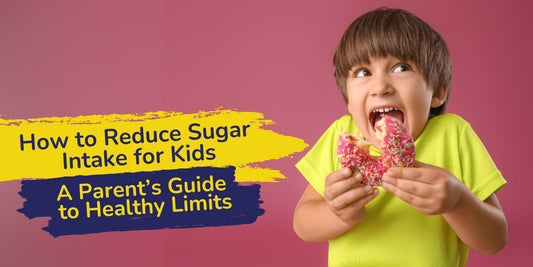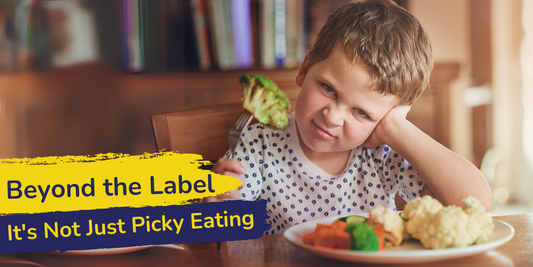
Guide to Kids' Portion Sizes: A Handy Chart for 2-5 Year Olds
Feeding young children often feels like solving a puzzle—one day they’re ravenous, the next they barely touch their food. As parents, it’s natural to wonder: Am I giving my child too much or too little? Understanding portion sizes is crucial, especially for children aged 2 to 5, as this stage lays the foundation for their lifelong eating habits.
Ensuring our young adventurers receive the right amount of nourishment is a common concern for many parents. With varying advice on portion sizes, it's easy to feel uncertain about how much food is appropriate for your child. Striking the right balance is essential to foster healthy growth and eating habits.
This guide will walk you through the importance of portion sizes, break down age-specific recommendations, and provide a simple, easy-to-follow chart to help you confidently serve balanced meals to your little ones.
Importance of Portions
Appropriate portion sizes are crucial in a child's diet. Serving too little may leave them undernourished, while too much can lead to overeating or picky eating behaviors. Understanding and implementing age-appropriate portions supports their development and encourages a positive relationship with food.
Understanding the Basics: Why Portion Sizes Matter
1. Growth & Development

During the early years, children experience rapid growth and development. Proper portion sizes ensure they receive the necessary nutrients to support:
• Physical Growth: Adequate intake of proteins, vitamins, and minerals promotes healthy bone and muscle development.
• Cognitive Development: Nutrients like omega-3 fatty acids and iron are vital for brain development and function.
• Energy Levels: Balanced portions provide sustained energy for active play and learning.
2. Preventing Picky Eating

3. Establishing Healthy Habits

3. The "Handy Chart" Explained

Portion Size Recommendations by Age
Below is a detailed chart outlining daily portion size recommendations for children aged 2 to 5 years:
|
Food Group |
2-Year-Olds (per day) |
3-Year-Olds (per day) |
4-Year-Olds (per day) |
5-Year-Olds (per day) |
|
Grains |
3 ounces |
4 ounces |
4-5 ounces |
5 ounces |
|
Vegetables |
1 cup |
1.5 cups |
1.5 cups |
2 cups |
|
Fruits |
1 cup |
1-1.5 cups |
1.5 cups |
1.5 cups |
|
Dairy |
2 cups |
2 cups |
2.5 cups |
2.5 cups |
|
Protein |
2 ounces |
3-4 ounces |
4 ounces |
5 ounces |
Note: These recommendations are based on guidelines from the American Heart Association.
Sample Meal Ideas
1. For 2-Year-Olds:
• Breakfast: ½ cup oatmeal topped with ¼ cup diced apples and ½ cup milk.
• Lunch: 1 ounce grilled chicken, ¼ cup steamed green beans, and ¼ cup cooked brown rice.
• Snack: ½ cup yogurt with ¼ cup mixed berries.
•Dinner: 1 ounce baked fish, ¼ cup mashed sweet potatoes, and ¼ cup peas.
2. For 3-Year-Olds:
• Breakfast: 1 scrambled egg with ½ slice whole-grain toast and ½ cup orange juice.
• Lunch: 1.5 ounces turkey slices, ½ cup carrot sticks, and ½ cup whole-grain pasta.
• Snack: ½ cup cottage cheese with ½ cup pineapple chunks.
• Dinner: 1.5 ounces lean beef, ½ cup mixed vegetables, and ½ cup quinoa.
3. For 4-Year-Olds:
• Breakfast: ¾ cup whole-grain cereal with ½ cup milk and ½ banana.
• Lunch: 2 ounces tofu stir-fried with ½ cup broccoli and ½ cup brown rice.
• Snack: 1 string cheese and ½ cup grape tomatoes.
• Dinner: 2 ounces roasted chicken, ½ cup roasted zucchini, and ½ cup couscous.
4. For 5-Year-Olds:
• Breakfast: 1 whole-grain waffle with 1 tablespoon peanut butter and ½ cup strawberries.
• Lunch: 2.5 ounces baked salmon, ½ cup sautéed spinach, and ½ cup wild rice.
• Snack: ½ cup hummus with ½ cup cucumber slices.
• Dinner: 2.5 ounces lean pork, ½ cup roasted Brussels sprouts, and ½ cup mashed potatoes.
Tips for Implementing Healthy Portion Sizes
1. Offer a Variety of Foods Encourage your child to explore different food
groups. A colorful plate not only looks inviting but also ensures they receive a range of nutrients.
2. Let Kids Self-Regulate Children are naturally good at listening to their hunger
cues. Allow them to decide when they’re full without insisting they finish everything on their plate.
3. Avoid Pressure to Eat Pressuring kids to eat often backfires.
Instead of creating stress around meals, focus on offering balanced options and letting them choose how much to eat.
4. Model Healthy Eating Habits Kids mimic what they see.
When you eat a variety of foods and practice portion control, they’re more likely to follow your lead.
5. Make Mealtimes Enjoyable Turn meals into a positive experience
chat about your day, explore new foods together, and keep the atmosphere relaxed.
6. Use Appropriate Tableware Child-sized plates and utensils
help visually cue proper portion sizes. Oversized dishes can make small portions seem inadequate.
7. Be Patient and Consistent It takes time for kids to adapt to healthy habits.
Consistency, patience, and gentle encouragement go a long way.
Conclusion
By understanding and applying appropriate portion sizes, you provide your young explorers with the necessary fuel for their growth and adventures. Establishing these habits early sets the stage for a lifetime of healthy eating and well-being.







